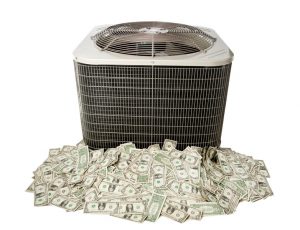 Spring is the best time of year to install a new air conditioning system, something we talked about at the beginning of the season. But making the choice to replace an old air conditioner with a new system is only the start of the installation process. There are many more choices you must make when it comes to a new air conditioner in Staten Island, NY, and you’ll require the assistance of HVAC experts for each of them. These choices include deciding on the type of AC to have installed (perhaps you want to try out a ductless system) and how powerful the cooling system needs to be (under-powered or over-powered are equally bad).
Spring is the best time of year to install a new air conditioning system, something we talked about at the beginning of the season. But making the choice to replace an old air conditioner with a new system is only the start of the installation process. There are many more choices you must make when it comes to a new air conditioner in Staten Island, NY, and you’ll require the assistance of HVAC experts for each of them. These choices include deciding on the type of AC to have installed (perhaps you want to try out a ductless system) and how powerful the cooling system needs to be (under-powered or over-powered are equally bad).
In this post, we’re going to look at the question of efficiency: how well does an air conditioning system convert electrical power into cooling output?
The Energy Efficiency Ratings
An air conditioner has two efficiency ratings: EER and SEER. They are similar, but the difference between them is important to understand.
EER: Energy Efficiency Ratio
EER is a ratio between the amount of steady cooling an individual system puts out (measured in BTUs) to the steady rate of electricity it consumes (measured in watt-hours). The higher EER, the more efficient a system is. EER is measured under a specific set of circumstances: outdoor temperature of 95°F, indoor temperature of 85°F, and relative humidity at 50%.
The current minimum EER requirement for a system to earn the ENERGY STAR label is 10 EER.
SEER: Seasonal Energy Efficiency Ratio
As you can probably tell from the name, SEER is almost identical to EER. It’s the same steady cooling to steady electrical use ratio, with a higher number meaning greater efficiency. The difference is the conditions under which SEER is measured. Rather than testing a unit under one set of circumstances, SEER is tested over an entire season’s worth of conditions, with temperatures ranging from the high 60s up to 106°F, and humidity ranging from dry to muggy. The SEER rating of a unit gives a sense of how the system performs during an entire summer. It’s a measure of “average” efficiency rather than a “spot test” efficiency.
The current minimum EER requirement for a system to earn the ENERGY STAR label is 15 EER.
How Energy Efficiency Matters
Reading these above descriptions, you might think, “Choosing a new system is easy! I’ll just look for the highest SEER/EER rating I can find!” However, high efficiency systems are more expensive, and just because a system has a high efficiency score doesn’t automatically mean it will save a household money. A high-efficiency air conditioner that’s a poor match for a home will still be a massive money waster.
Finding the right system is a process of balance, and this is the reason you want experienced HVAC technicians on the job each time. We’re trained to understand how to best match a home and budget to the right new air conditioning system. And right now, you can save up to $2,950 on new energy efficient equipment, with a free proposal on all replacements.
Bob Mims Heating & Air Conditioning has served the air conditioning needs of Staten Island since 1955.

